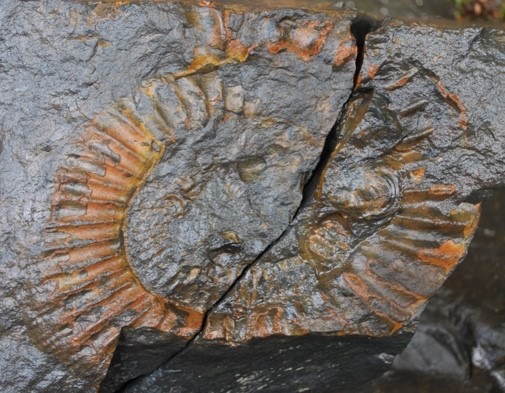-
Faculty of Biosphere - Geosphere Science, Department of Dinosaur Paleontology
- Professor
- Hidetsugu TSUJIGIWA
- Research Field
Regenerative medicine, Tumor
- Keyword(s)
Hard tissue, Stem cell, Regeneration, Microenvironment
- Research theme
-
- Regenerative medicine mainly focused on hard tissue such as bone and teeth.
- Elucidation of cell-to-cell interactions between in tumor parenchyma and in stromal and Development of new therapies.
Outline of research activitiesThere are many diseases associated with hard tissue, such as osteoporosis, osteoarthritis and periodontal disease, and their patients have increased with the advent of an aging society. In this laboratory, for the treatment of these diseases, we are developing regenerative research on hard tissue (bone, cartilage, teeth) by setting three keyword; growth factors, extracellular microenvironment and stem cell.

- Desired cooperation
-
- Search of useful substances such as osteoporosis preventive drug.
- Development of new biomaterials.
-
Faculty of Biosphere-Geosphere Science, Department of Dinosaur Paleontology
- Professor
- Masato FUJITA
- Research Field
Geology, Sedimentology, Plaleontology, Museology
- Keyword(s)
Paleoenvironment, Geological survey, footprint, Museum, Exhibition
- Research theme
-
- Geology, Sedimentology, and Paleontology of the Mesozoic system
- Paleoecology of dinosaurs on the basis of footprints
- Effective museum exhibition techniques
Outline of research activities


Through field-based surveys, I am conducting research to clarify the geology and paleoenvironment of Mesozoic strata distributed in the Hokuriku region. I am also conducting research to clarify ecology of dinosaurs, such as their gait, walking speed, and gregarious behavior, based on dinosaur footprints. We will also be researching effective methods for museum exhibitions that focus on dinosaur fossils.

- Desired cooperation
-
- Research on the protection of fossils exposed in the wild, such as footprint fossils
- Effective museum exhibit techniques using digital technology
-
Faculty of Biosphere - Geosphere Science, Department of Dinosaur Paleontology
- Professor
- Mototaka SANEYOSHI
- Research Field
Geology, Sedimentology, Paleontology
- Keyword(s)
Paleoenvironments, Geological survey, Fossil Taphonomy
- Research theme
-
- Stratigraphy of Upper Cretaceous of Gobi desert, Mongolia
- Late Cretaceous of Dinosaur fossils from Gobi desert, Mongolia and Late Miocene Mammalian fossils from Great Rift Valley in Kenya
- Sedimentation processes of modern River systems
- Paleoenvironments of Miocene sediments in Nagi, Okayama Prefecture
Outline of research activities


I am actively involved in paleontological excavations spanning Mongolia, Kenya, and northern Okayama Prefecture, while simultaneously conducting meticulous paleoenvironmental reconstructions based on robust geological investigations. Moreover, my endeavors extend to the comprehensive reconstruction of the entire ecological framework of the relevant time periods, encompassing small vertebrates, insects, and invertebrates, achieved through the discernment of the intricate interconnections between fossils and their corresponding stratigraphic contexts. Furthermore, our team enthusiastically engages in lifelong learning endeavors, exemplified by organizing exhibitions, workshops, and lectures that showcase esteemed fossil specimens.

- Desired cooperation
-
- -
-
Faculty of Biosphere - Geosphere Science, Department of Dinosaur Paleontology
- Professor
- Takafumi KATO
- Research Field
Vertebrate Paleontology, Phylogeny
- Keyword(s)
Mammal, Rodent, Paleogene, Neogene
- Research theme
-
- Evolution and adaptive radiation of terrestrial mammals
- in East Asia
- Research on Mesozoic marine reptiles
Outline of research activities

In Japan, fossils of small mammals, such as those the size of mice or moles, are rarely found in older geological strata. This scarcity is largely due to the fact that fossil searches for small mammals have primarily focused on sediments accumulated in limestone fissures or caves, which are uncommon in strata older than 800,000 years. As a result, discoveries of small mammals from these earlier periods have been limited. Using new methods, I have successfully extracted small mammal fossils from strata dating back 3.5 million and 26 million years. My work contributes new insights into Japan’s fossil mammal record, which has traditionally been dominated by reports of large mammals such as elephants and deer, and aims to shed light on transitions in mammalian fauna across East Asia.

- Desired cooperation
-
- Research related to paleovertebrates
- Research on extraction methods for small vertebrate
- fossils
-
Faculty of Biosphere - Geosphere Science, Department of Dinosaur Paleontology
- Associate professor
- Shoji HAYASHI
- Research Field
Vertebrate Paleontology, Bone Histology, Evolutionary Biology
- Keyword(s)
Dinosaur, Mammal, Bone Histology, Aquatic Adaptation, Ontogeny
- Research theme
-
- Dinosaur Paleobiology
- Secondary adaptation of tetrapods to life in water
- Gigantism and dwarfism of vertebrates
Outline of research activities



Bone histology is the study of bone function and growth by sectioning bones into thin slices to visualize internal tissues. This technique has proven instrumental in uncovering the physiology and ecology of extinct animals, providing insights into their growth rate, age, metabolism, and degree of aquatic adaptation — factors that were previously challenging to reconstruct. My research focuses on employing bone histology to explore the life and adaptive processes of large vertebrates, such as dinosaurs and mammals. Specifically, I aim to uncover what factors influenced these creatures to evolve into giants or diminutive forms and how terrestrial vertebrates altered their physiology and bone structure to successfully readapt to aquatic environments.

- Desired cooperation
-
- Researches on living vertebrates (e.g., ecology, anatomy, and pathology)
- Paleoenvironment researches based on geology
- Vertebrate paleontological researches
-
Faculty of Biosphere - Geosphere Science, Department of Dinosaur Paleontology
- Lecturer
- Kentaro CHIBA
- Research Field
Vertebrate Palaeontology, Dinosaur Phylogeny, Osteohistology
- Keyword(s)
dinosaur, growth, fossils
- Research theme
-
- Dinosaur taxonomy and evolution
- Macroevolution in animal growth
- Growth reconstruction of fossil vertebrates
Outline of research activities
Animal bones typically contain growth marks, similar to those of tree rings. Previous studies have utilized these marks to reconstruct the growth of extinct animals, especially dinosaurs, and further investigate their physiology and ecology. Using specimens and data that I have collected through fieldwork and museum visits all over the world, I hope to contribute to our understanding of the link between life histories of fossil animals and macroevolutionary patterns.

- Desired cooperation
-
- Growth of extant and recently extinct animals
- Chemical analysis of fossil bones, teeth and shells
- Imaging techniques for bone microstructure
-
Faculty of Biosphere - Geosphere Science, Department of Dinosaur Paleontology
- Assistant professor
- Ryuji TAKASAKI
- Research Field
Vertebrate paleontology
- Keyword(s)
Dinosauria
- Research theme
-
- Dinosaur evolution
Outline of research activitiesFieldworks in and out of Japan and describing dinosaur fossils. Mainly working on hadrosaurids, plant-eating dinosaurs that thrived during the late Cretaceous. Also reconstructing dinosaur soft-tissue anatomy through osteological and non-osteological fossils.
Fieldworks:
Mongolia, USA, CanadaNamed species:
Kamuysaurus japonicus, Yamatosaurus izanagii, Paralitherizinosaurus japonicus, Ravjaa ishiii- Desired cooperation
-
- Animal experiment
- Sedimentology, chronology














